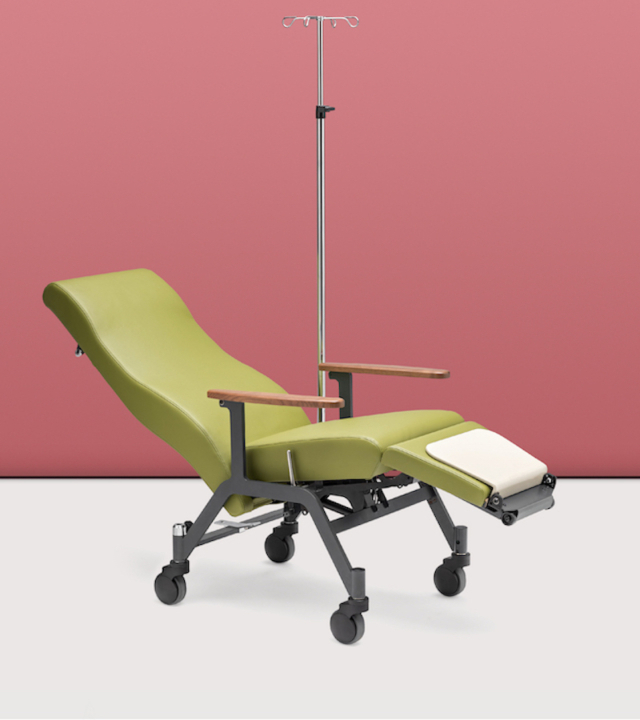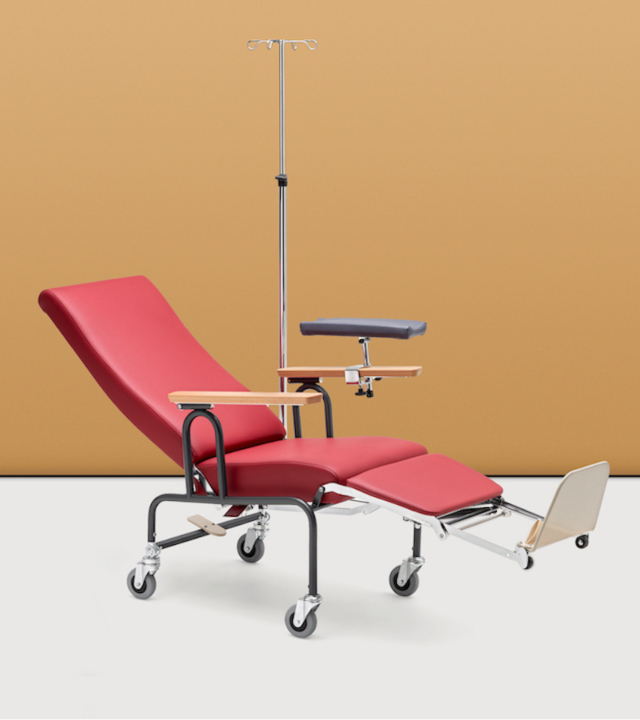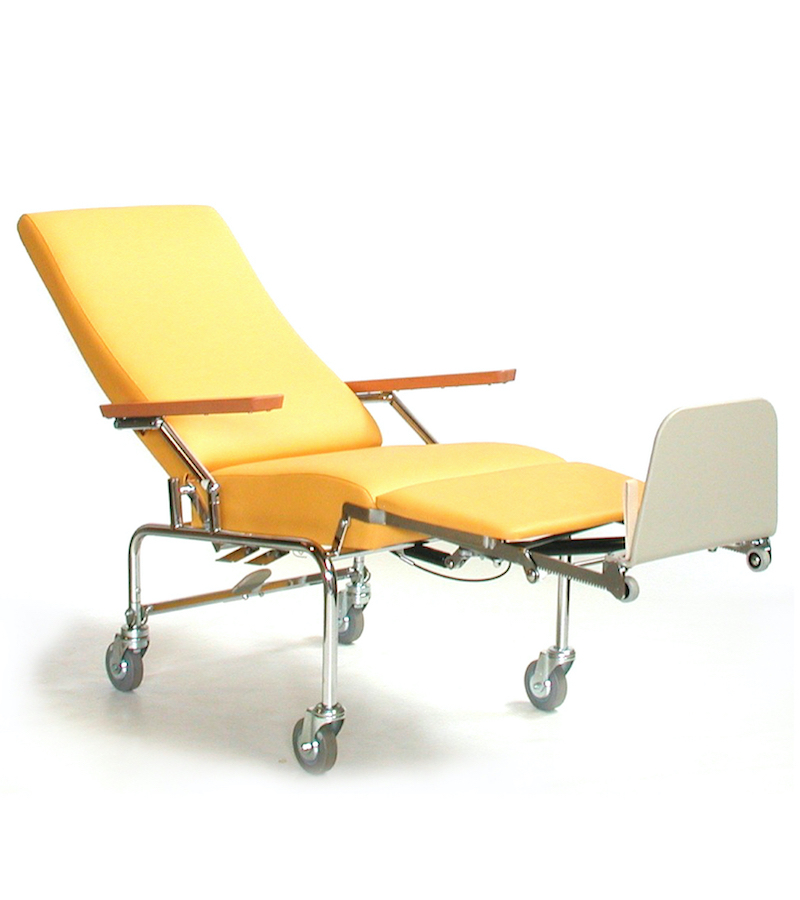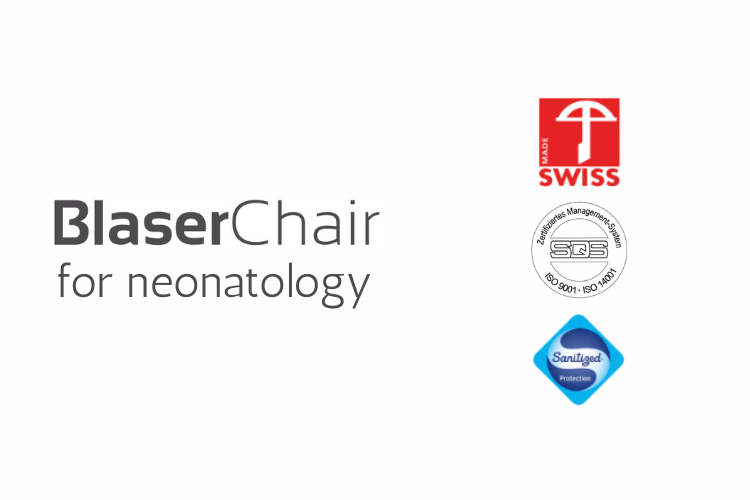The mobile reclining chairs Vita II, Care R and Care are ideally suited for use as kangaroo mother chairs and are an integral part of care for premature babies on neonatal wards in hospitals and clinics.
The recliner chairs Vita II, Care R and Care are characterised by long-term sitting and lying comfort, safety and mobility for the mother and the child as well as the simplest handling. The kangaroo chairs are wipeable, are equipped with the antimicrobial hygiene function Sanitized and offer maximum support for the nursing staff.
Vita II

Care R

Care

Kangaroo care & benefits
The so-called “kangaroo method” was developed in 1978 by the Colombian neonatologist Dr Edgar Rey Sanabria and is an alternative to incubator care for low birth weight infants.
According to the WHO, “kangarooing” is described as early and sustained skin-to-skin contact between mother and child, exclusive breastfeeding, as well as early hospital discharge and close follow-up care at home for the children.
Several studies demonstrate the positive effects of kangaroo care on neonatal outcome and consider the kangaroo method to be safe and cost-effective.
Silva et al. (2016) conclude that care with frequent skin-to-skin contact in preterm infants can reduce behavioural problems in early infancy.
In the study on the analgesic effect of the kangaroo method in preterm infants, König (2015) points out that the kangaroo method can be used as an analgesic measure for preterm infants from the 28th week of gestation with an application duration of at least 15 minutes for a heel prick.
Nimbalkar et al. (2014) studied that early use of the kangaroo method within the first 24 hours after birth significantly reduces the incidence of hypothermia within the first 48 hours of life and recommend sustained promotion of the kangaroo method in mature and late preterm infants.
References
Kinder mit geringem Gewicht – „Känguruhen“ verbessert das neonatale Outcome: https://eref.thieme.de/ZZWH8R1
Silva, M. G., Barros, M. C., & Pessoa, Ú. M. (2016). Einfluss der Känguru-Methode auf die Verhaltensentwicklung bei Frühgeborenen. Neonatologie Scan, 5(03), 194-194.
König, D. (2015). Die analgetische Wirkung der Känguru-Methode bei Frühgeborenen: ein Systematic Review (Doctoral dissertation, Evangelische Hochschule Nürnberg).
Nimbalkar, S. M., Patel, V. K., & Patel, D. V. (2014). Känguru-Methode: Hautkontakt hält Kinder nachhaltig warm. Neonatologie Scan, 3(04), 264-265.

